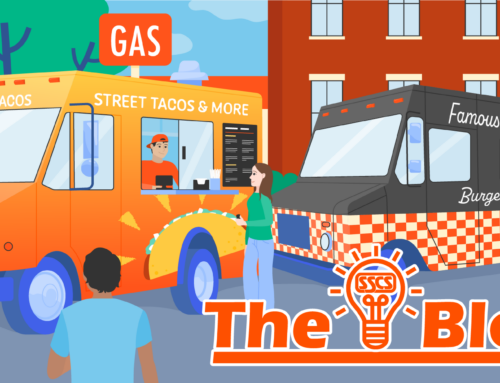
The Van Life
Someone who lives on the road in a 72-square foot cargo hold needs c-stores more than anyone.
Vans aren’t as popular as they used to be. SUVs are great, but they basically ate up the market for vans. That’s too bad. Van lifestyles can be pretty interesting.
For example, what could be more iconic than the interior wood-paneled, shag carpeted, black light lit, 8-track tape blasting, rock and roll version of the 60s and 70s? Teens who came of age in that era have almost certainly been in one, but they might not tell you because this kind of van has an, er, dodgy reputation.
On the other hand, if you are looking for a brightly-colored option that is bursting with good vibes, may we present, for your consideration, The Mystery Machine, owned and operated by the Scooby Gang. There’s nothing unsavory about these enterprising young sleuths and their mode of transportation, although Fred spotted Shaggy in a rock and roll van one time, so he won’t let him drive anymore.
Fewer vans also means fewer van murals, a loss for everyone who loves art: sword-and-sorcery heroes, sailing ships on stormy seas, skylines, cartoon characters, beautiful people from mythic lands . . . sorry, SUV owners, but the only canvas on which these epic visions can unfold is a big, bad side panel. A van panel.
Not that the van’s glory days are over. A current trend indicates a growing number of individuals who are choosing to spend life in their vans 24/7. These aren’t road-tripping SUV owners on vacation. These people are living in their vans because they want to. Freedom. Adventure. A close connection to nature. That, and the drive for self-sufficiency, can exert a strong pull.
Some see it as a version of the tiny house movement, which has captivated those seeking a more economical way to live[1], with clever adaptions of pared-down household amenities, such as this bathtub. You’d be surprised how the 72-square-foot cargo hold of van can be transformed into a home, complete with solar-powered electricity, running water, and a chest freezer for a low-energy refrigerator.
While it may not seem like van dwellers have much in common with those who opt for a more permanent address, they do: a need for c-stores. Their resources are limited and must be constantly replenished. The nation’s c-store network casts a wide net, making groceries and essential supplies like camping equipment available in less populated areas.
Convenience stores can also function, if needed, as a safe haven if something unexpected comes up. They’re well-lit, open late into the night, have restrooms, and probably access to Wi-Fi, essential if you are in unfamiliar surroundings.
In addition, convenience stores are often social hubs where locals gather, making them ideal spots to strike up conversations, exchange travel stories, and seek advice on nearby attractions. Van lifers can interact with store owners, employees, and fellow customers, forging connections and gaining valuable insights into the local culture and environment.
—————————————————————
If you are a c-store operator, sustaining a completely mobile lifestyle may not be possible, but wi-fi and mobile computing do make it possible to monitor your business from any far-flung location. Of course, the information at your fingertips must give you a clear, accurate view of your business to be valuable. Fortunately, SSCS excels at delivering detailed, up-to-date data in an actionable presentation.
Between our Computerized Daily Book and Transaction Analysis programs, we provide the broadest range of reporting in the industry. We can give you high level views of general trends, or drill down into the receipt detail to get to the bottom of things. Our mobile-friendly graphics facilitate understanding. You’ll see trends unfold over time, and you’ll be positioned to proactively address potential issues.
Wherever you might be.
Give us a call at (800) 927-7277 and we can talk about it.
[1] Which includes shipping containers, by the way.






Leave A Comment